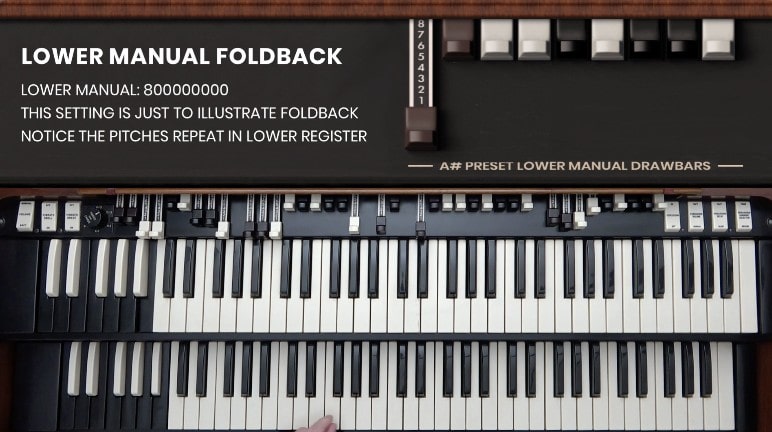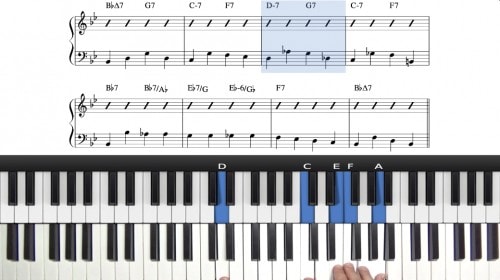Lower Manual Foldback
In this lesson we explore lower manual foldback on the Hammond organ.
Robert begins with a demonstration of lower manual foldback explaining how and why this occurs on the Hammond organ. We use a drawbar registration that would not be used in performance, this is purely to demonstrate the presence of lower manual foldback.
The foldback of the pitches on the lower manual is an aspect of the organ that we must grow accustomed to. The foldback can inform how we play our bass lines and the melodic contours that we decide to use.
Resultant Bass
By pulling out the second drawbar we can demonstrate an effect which is referred to as ‘resultant bass’. The addition of the overtone from the second drawbar can be used to overcome the foldback which occurs when playing walking bass on the lower manual.
Lesson Downloads
-
Walking Bass Line Examples File Type: pdf
-
Common Drawbar Registrations File Type: pdf
-
Lower Manual Bass & Pedals Notation & Examples File Type: pdf
Practice Tips
-
The setting of the second drawbar adjusts the amount of resultant bass in the lowest octave on the lower manual.
-
Playing with the second drawbar pushed all the way in gives us a very sweet comping sound. However it gives us no resultant bass in the lowest octave.
-
Pulling out the second drawbar gives us more of a nasal sound for comping voicings can be used to remove the foldback in the lowest octave of the lower manual.
-
Use your taste and judgement on where to set the second drawbar and understand the implications this has on your bass line technique and the melodic contours of your bass line.







